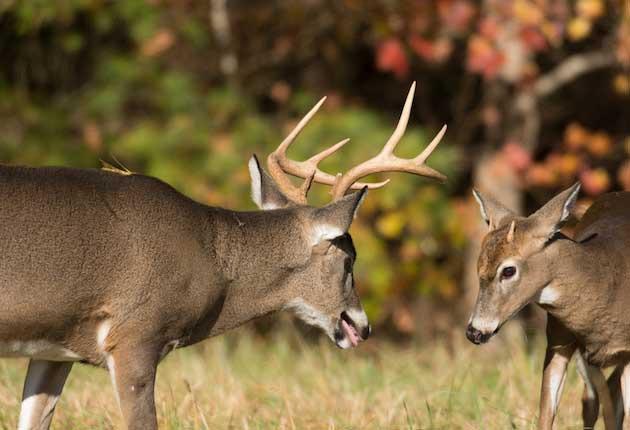Quality deer management has its greatest success story to date. For the first time on record, hunters killed more 3½-year-old and older bucks than they did yearlings.
The news came in the Quality Deer Management Association’s annual Whitetail Report 2016. The report is based on the latest season’s data, i.e. 2014-15, and provides a comprehensive status update on North America’s most popular game animal.
As the report’s introduction by Kip Adams states, whitetails are the most important game species on the continent. More hunters pursue them than any other species, paying more financially as a result. Part of that cost can be attributed to QDM — food plots, trail cameras, and the like.
The cost is well worth it, as the report clearly shows. According to QDMA, 2,609,635 bucks ages 1½ years and older were killed in the U.S. that season. The average for yearling bucks harvested was 33 percent of the total, or roughly 861,180. That represents a three percent drop from 2013 and four less than 2012. By comparison, the number of yearling bucks taken in 1989 was 62 percent of the total harvest.
The percentage of 3½-year-old and older bucks was higher, albeit slightly, than the yearlings, accounting for 34 percent of the bucks taken — roughly 887,276 animals. That number held steady since 2013 and is slightly lower than 2012’s 32 percent.
The news wasn’t all sunshine and antlers, though. Total harvest results show a drop of four percent from 2013 — 122,854 fewer bucks killed than the previous year.
Doe harvests fell off 11 percent, from 3,327,210 to 2,958,256 — still a lot of meat, but certainly much less. That number is deceptive, however: With different regions come different management goals, and with them a varying number of does to be taken for optimal herd structure.
QDMA produces the annual report based on the results of 33 states across the Southeast, Northeast, and Midwest. The numbers are estimates, of course, because no agency can physically count or age every deer killed in the country. Wildlife officials prepare their data in one of the following ways:
1. States require every deer taken to be reported, then use that number as the minimum harvest estimate.
2. They use Method #1 to set a minimum estimate, then apply a correction factor to estimate total harvest.
3. The state may do surveys — phone or mail — to select a random sample of hunters and statistically estimate days spent afield, harvest numbers, and the species hunted. Provided the survey is large enough, the margin of error will be low.
Of the 33 states, 21 produce a total harvest estimate and 12 report a minimum harvest number. The report can be viewed in full by clicking here.
Cover Image: Thinkstock


